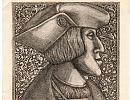Contact Seller
White Court Art
Tel02921252747Please quote Antiques Atlas.


 Pair of portraits of French nobles. 18th century.
Pair of portraits of French nobles. 18th century.
 Great 17th century Italian painting, landscape
Great 17th century Italian painting, landscape
 Still life oil painting by William Charles Penn
Still life oil painting by William Charles Penn
 Morning Mists, oil painting by Joseph Knight
Morning Mists, oil painting by Joseph Knight
 Large oil painting of a theatre by Henry Ball
Large oil painting of a theatre by Henry Ball
 Floral Still Life
Floral Still Life
 Great 17th century painting, Tobias and the Angel
Great 17th century painting, Tobias and the Angel
 Antique 17th Century Biblical Painting
Antique 17th Century Biblical Painting
 Royal Academy Exhibited Hunt Masterpiece
Royal Academy Exhibited Hunt Masterpiece
 Carl Heuser – Old man with pipe & old man in green hat
Carl Heuser – Old man with pipe & old man in green hat
 19th century Italian painting, Madonna praying
19th century Italian painting, Madonna praying
 Venetian School Painting Of The 18th Century
Venetian School Painting Of The 18th Century
Non UK callers :
+44 2921252747
"die Singende Lautenspielerin" Singing Lutenist


"die Singende Lautenspielerin" Singing Lutenist By Ernest Neuscul
'Die singende Lautenspielerin' - Singing Lutenist, undated [circa 1964],
Oil on furnishing linen, signed 'EN', titled to stretcher, numbered F41 and with paper label 193 to stretcher
Image 23" x 26"
Ernest Neuschul was born of Jewish parents in 1895 in Usti nad Labem in the Czech Republic. He studied in Prague and later Vienna, where he was attracted by the paintings of Klimt and Egon Schiele and the expressionistic works of Oskar Kokoschka.
After the 1st World War ended he moved to Berlin, joining the Academy of Arts where he won the Rome prize for outstanding achievement. In 1919 Neuschul’s first one-man exhibition opened in Prague. He settled in Berlin, a city he loved, embarking upon an energetically productive period, painting under the post-war influence of the New Objectivity (Neue Sachlichkeit) movement. In 1926 he joined the Novembergruppe, first founded in 1918 and a vigorous opponent of Fascism.
In 1932 Neuschul became Professor of Fine Arts at Berlin’s Academy of Fine Art and was also elected chairman of the Novembergruppe. In 1933 however, an exhibition of his paintings was closed down by the Nazis. Because of his Jewish birth and radical political opinions Neuschul also lost his teaching post and in March 1933 he returned to Usti nad Labem accompanied by his wife Christl. In 1935 Neuschul was invited to exhibit and work in the Soviet Union, painting portraits of steelworkers and revolutionary figures and even gaining a double portrait commission of Stalin and Dimitroff. But he was warned of the machinations of Stalin and returned to Prague. In 1937 however, several of Neuschul’s paintings on exhibition in Usti were disfigured with swastikas, a grim foretaste of what awaited him and his family if they remained. Neuschul, his wife and child eventually escaped the Nazis on the last train out of Czechoslovakia, arriving in London in 1939 and settling in Wales for the duration of the war.
SellerWhite Court Art
View all stock from
White Court Art

 Private dealer
Private dealer
By appointment only
Powys
Mid Wales
Tel : 02921252747
Non UK callers : +44 2921252747
'Die singende Lautenspielerin' - Singing Lutenist, undated [circa 1964],
Oil on furnishing linen, signed 'EN', titled to stretcher, numbered F41 and with paper label 193 to stretcher
Image 23" x 26"
Ernest Neuschul was born of Jewish parents in 1895 in Usti nad Labem in the Czech Republic. He studied in Prague and later Vienna, where he was attracted by the paintings of Klimt and Egon Schiele and the expressionistic works of Oskar Kokoschka.
After the 1st World War ended he moved to Berlin, joining the Academy of Arts where he won the Rome prize for outstanding achievement. In 1919 Neuschul’s first one-man exhibition opened in Prague. He settled in Berlin, a city he loved, embarking upon an energetically productive period, painting under the post-war influence of the New Objectivity (Neue Sachlichkeit) movement. In 1926 he joined the Novembergruppe, first founded in 1918 and a vigorous opponent of Fascism.
In 1932 Neuschul became Professor of Fine Arts at Berlin’s Academy of Fine Art and was also elected chairman of the Novembergruppe. In 1933 however, an exhibition of his paintings was closed down by the Nazis. Because of his Jewish birth and radical political opinions Neuschul also lost his teaching post and in March 1933 he returned to Usti nad Labem accompanied by his wife Christl. In 1935 Neuschul was invited to exhibit and work in the Soviet Union, painting portraits of steelworkers and revolutionary figures and even gaining a double portrait commission of Stalin and Dimitroff. But he was warned of the machinations of Stalin and returned to Prague. In 1937 however, several of Neuschul’s paintings on exhibition in Usti were disfigured with swastikas, a grim foretaste of what awaited him and his family if they remained. Neuschul, his wife and child eventually escaped the Nazis on the last train out of Czechoslovakia, arriving in London in 1939 and settling in Wales for the duration of the war.
Price The price has been listed in British Pounds.
Conversion rates as of 1/JUL/2025. Euro & Dollar prices will vary and should only be used as a guide.
Always confirm final price with dealer.
Category Antique Pictures / Engravings / Art
> Antique Oil Paintings
Date 1964
1930s Antiques Material Oil Painting on Canvas
Origin Czechoslovakia
Item code as298a574 / 455
Status Sold
£8750.00 
$12003.25 
€10190.25 

$

€

Conversion rates as of 1/JUL/2025. Euro & Dollar prices will vary and should only be used as a guide.
Always confirm final price with dealer.
View all stock from
White Court Art

 Private dealer
Private dealerBy appointment only
Powys
Mid Wales
Tel : 02921252747
Non UK callers : +44 2921252747
You may also be interested in
 Pair of portraits of French nobles. 18th century.
Pair of portraits of French nobles. 18th century.
 Great 17th century Italian painting, landscape
Great 17th century Italian painting, landscape
 Still life oil painting by William Charles Penn
Still life oil painting by William Charles Penn
 Morning Mists, oil painting by Joseph Knight
Morning Mists, oil painting by Joseph Knight
 Large oil painting of a theatre by Henry Ball
Large oil painting of a theatre by Henry Ball
 Floral Still Life
Floral Still Life
 Great 17th century painting, Tobias and the Angel
Great 17th century painting, Tobias and the Angel
 Antique 17th Century Biblical Painting
Antique 17th Century Biblical Painting
 Royal Academy Exhibited Hunt Masterpiece
Royal Academy Exhibited Hunt Masterpiece
 Carl Heuser – Old man with pipe & old man in green hat
Carl Heuser – Old man with pipe & old man in green hat
 19th century Italian painting, Madonna praying
19th century Italian painting, Madonna praying
 Venetian School Painting Of The 18th Century
Venetian School Painting Of The 18th Century



